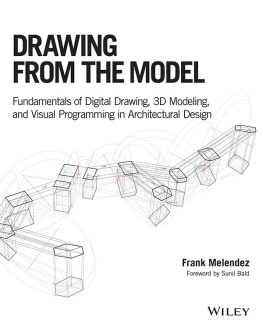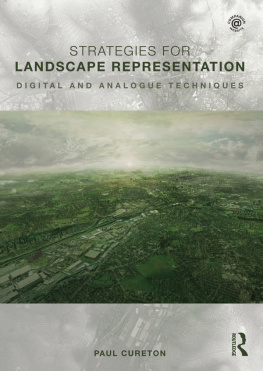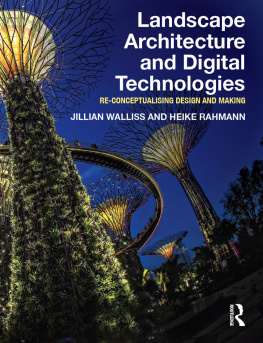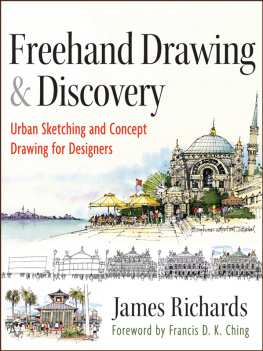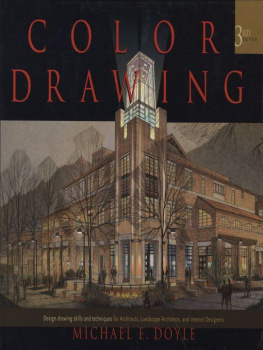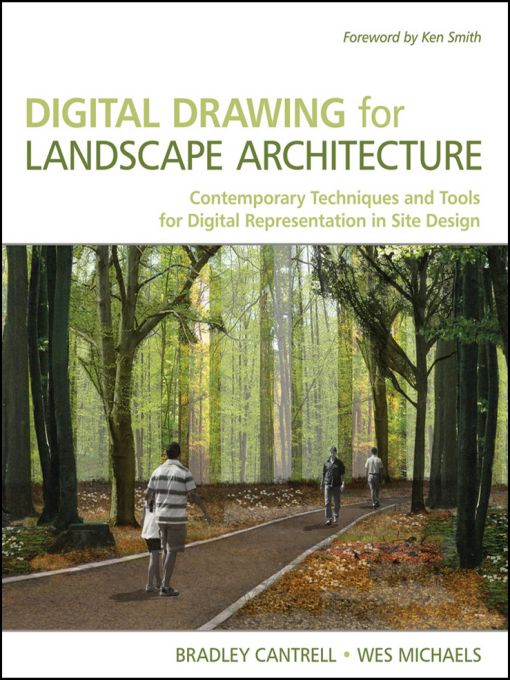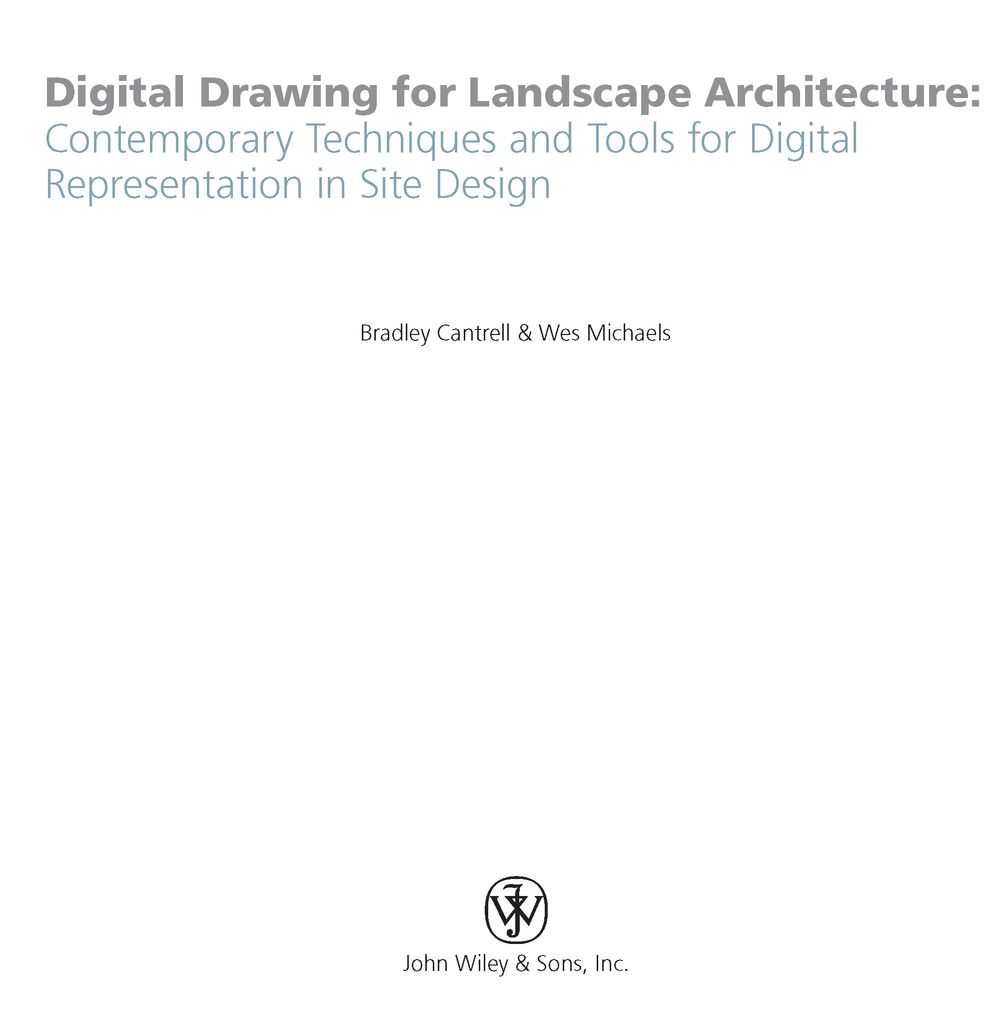Table of Contents
Foreword
It is easy these days to assume everyone knows how to use new media. One probably imagines that by now new electronic media and image making are embedded in the DNA of everyone who uses a computer, personal device, or other digital tools. But the reality is that media and image making are an art form with learned techniques and protocols. There is always need for excellent tutorials that describe basic techniques and their application and I am pleased that Digital Drawing for Landscape Architecture is providing for a new generation of landscape architects training in contemporary digital media and its application as an emerging art form.
I come from the generation that learned manual graphic techniques came of age using digital applications as an extension of these traditional techniques. As a student, I remember learning photography by reading manuals and silk-screening from printmaking books. Skills like collage and montage were acquired much more intuitively, and other techniques such as press-on lettering were learned on the job in an office. It is interesting to me to see how much of the old methods are built into the new digital procedures. One of my favorite Photoshop filters is pixelate-mezzotint. From my knowledge of printmaking, this filter makes clear sense to me. Likewise cut and paste tools are basically collage techniques, and dry brush and cross hatch, etc., are based on traditional art processes. Expanded electronic techniques go beyond mere digital adaptation of the traditional to create new graphic and design possibilities that were difficult or even impossible to achieve before. Certain kinds of geometric distortions, such as stretching, bending and inversions, are not only transforming the representation of landscape design but also design itself as new forms and spatial relationships are pioneered in digital space. Combining techniques to create non-standard representation forms has emerging potential as well. This is clearly evident in todays contemporary art world where artists are creating new art which incorporates a vast array of new media in innovative ways to challenge our way of seeing and understanding the world. Today, my office uses an array of representation techniques ranging from drawing to physical model building to digital modeling, and all sorts of combinations of digital imaging and animations, all at a range of differing scales. Ultimately, the best design still results from thinking, designing and representing with multiple scales, views and methods.
This book will become a standard manual for students entering the profession and learning their craft, as well a valuable reference for those already in practice who need to keep current with emerging trends. Just as it was impossible to practice twenty-five years ago without knowledge of ozalid printing, letraset, zipatone and rapidiograph use, today it is unimaginable to practice in a world without Photoshop, Illustrator, 3DStudioMax, Rhino, SketchUp and CAD.
Ken Smith
Preface
Digital Drawing for Landscape Architecture: Contemporary Techniques and Tools for Digital Representation in Site Design is the product of many years of professional practice and teaching at the Louisiana State University Robert Reich School of Landscape Architecture. As designers, we attempted to create a book that focused on getting the job done. In this sense, each section tackles the basics of the subject matter and each chapter introduces a short background with an explanation of how to accomplish a phase of the representation process with current digital tools. Our inspiration comes from the books that introduced us to landscape architectural graphics, such as Grant Reids Landscape Graphics and Chip Sullivans Drawing the Landscape. Both books present the reader with techniques that are applicable to a specific topic with just enough background to explain how it fits within the larger profession. Our hope is that Digital Drawing for Landscape Architecture will serve as a contemporary, digital version of these books for landscape architecture professionals and students.
We come from a group of academics and professionals who did not take any formal digital media courses. Instead, we were taught analog mechanical drafting and drawing and then applied those skills to our interest in digital media. All of our skills come from exploration through trial and error. We learned that doing it the second or third time was always the most productive. Typically, we would jump into a project and begin to experiment. If we didnt understand a tool, we opened the Help file or just started using it to see what happened. This book outlines techniques, but we encourage you to experiment. There are an infinite number of ways to get to the same solution, and it is important that you find a way that works for you.
Digital Drawing for Landscape Architecture is a book about the moment, bridging analog and digital techniques. Digital landscape representation relies heavily on the past, and we attempt to tie past and present together. We are consistently amazed at the work our colleagues and students produce, and our hope is that by putting out defined techniques, individuals will question and evolve these practices. In the long run, landscape representation will eventually begin to leave the conventions of the mechanically drafted orthographic drawing in favor of parametric modeling and geographic information systems. While these systems exist, they currently do not address the needs of site designers as creative design tools.
It is always a risk to base any book on specific software, but when techniques are introduced it is almost impossible to be completely software agnostic. It is possible to create amazing work with any software, but we focused on the tools we use everyday: Adobe Photoshop, Adobe Illustrator, 3ds Max, SketchUp, and Vectorworks or AutoCAD. These are not the only tools, but they are the ones we have evolved with over time and, therefore, feel the most comfortable using. While software does change, it has essentially been very consistent for the past 10 years. Features are added and refined, but the process has not been considerably altered through time. It is very easy to constantly chase the newest tools, but it is typically more productive to evolve our own processes with or in spite of the tools. You will find that most of the techniques discussed in this book will work in software versions that date back 5 to 10 years.
Digital Drawing for Landscape Architecture presents examples and techniques for each of the traditional design drawings: diagram, plan, section/elevation, and perspective. These drawings are the basis for all of our representation endeavors; and while we encourage experimentation in how these drawings evolve, it is important to recognize the need for measured drawings when working in digital media. The techniques also focus on speed and efficiency, which translates to getting a job done quickly, with the fewest mouse clicks, and being able to edit the drawing when necessary. You will find that almost every technique allows representation to be an iterative process, creating elements that we assume will be changed or modified. There is very little certainty within the design process and, therefore, it is essential that drawings remain flexible.
This book assumes that readers are versed in basic representation concepts and computing principles. The book spends a small amount of time discussing how computing affects the representation process and the basics of each piece of software, but it is not intended as an introduction to any particular piece of software. There are many great books that catalogue and explain each feature of the software. The softwares Help file is a great resource to help you understand every tool and its effect. If you dont understand a concept in the Help file, use a search engine and find out more information on the Web. We are no longer working alone, and someone else may have already figured out or encountered many of the issues you will run into with the software.



